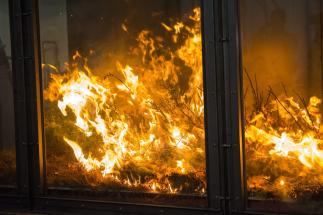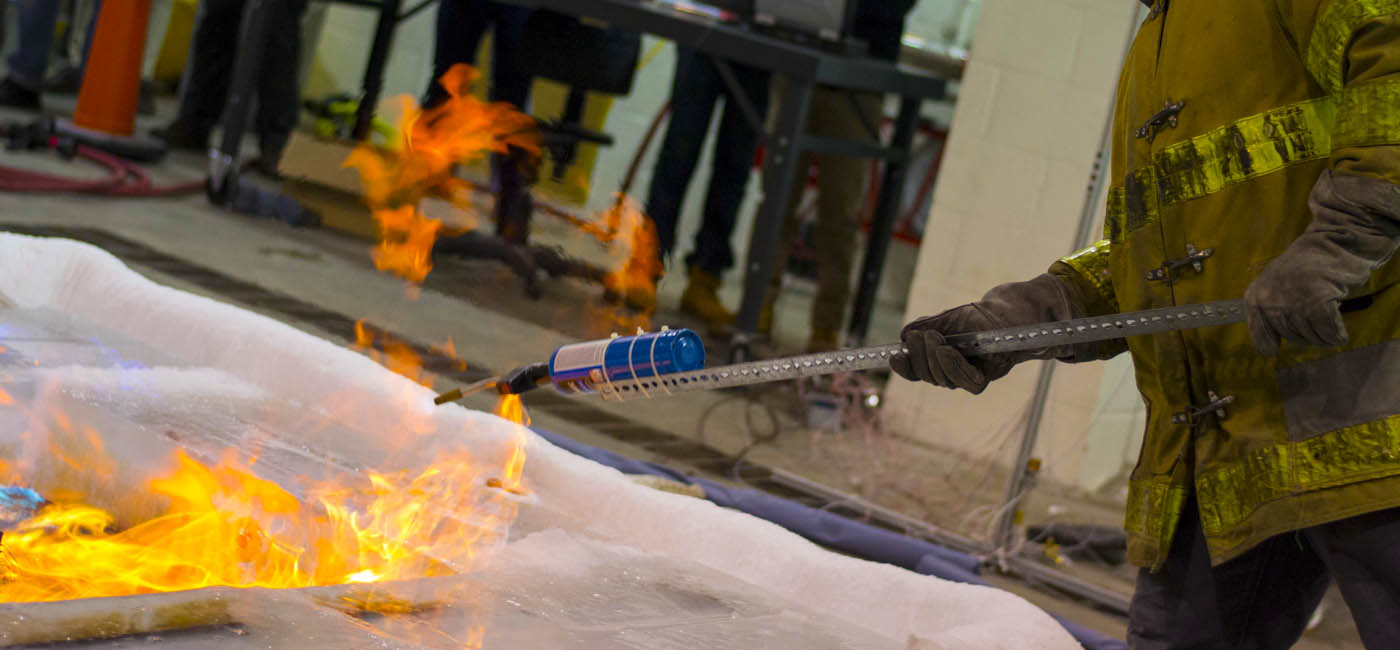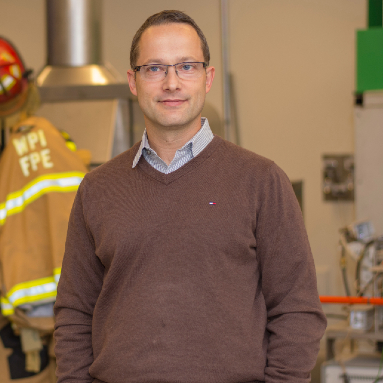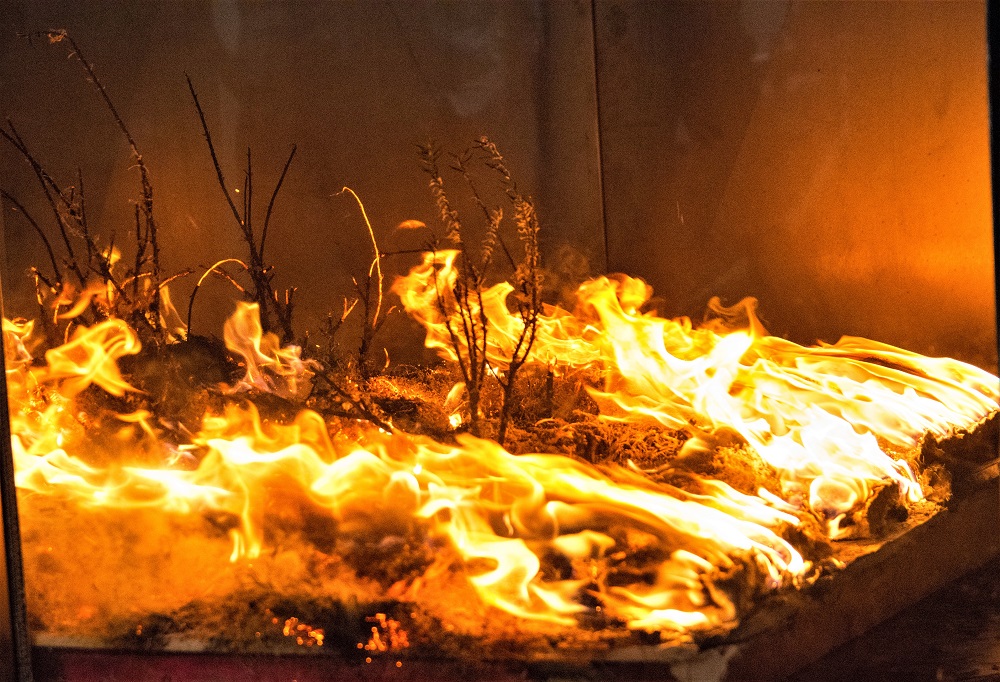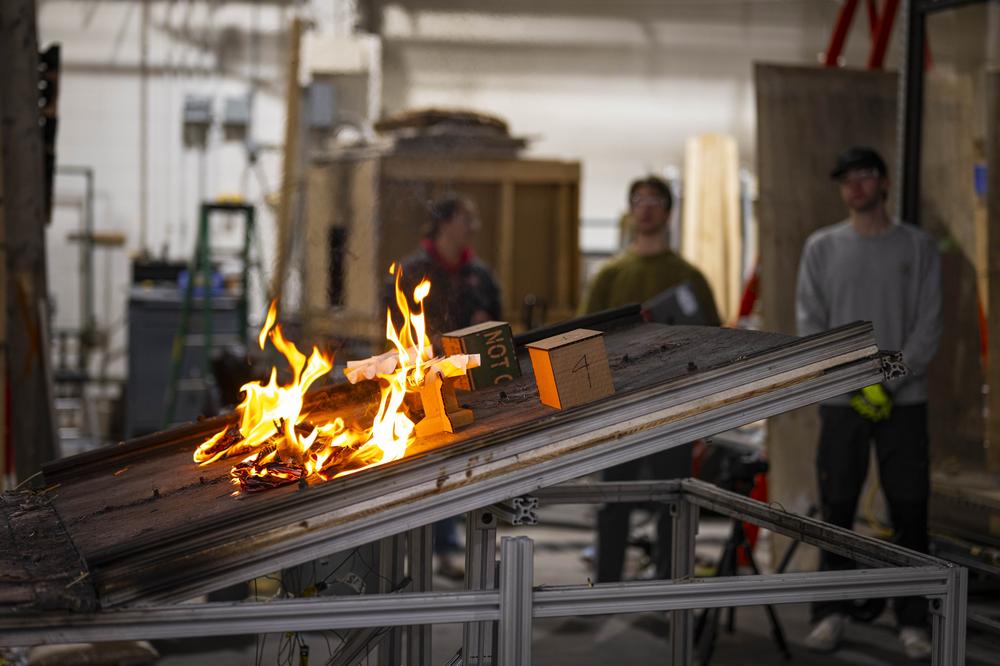Worcester Polytechnic Institute (WPI) researchers Albert Simeoni and James Urban have been awarded $514,981 by the California Department of Forestry and Fire Protection (CAL FIRE) to develop a model to predict how fire spreads from burning wildlands to communities so that fire protection engineers can design homes and surrounding landscaping to better withstand destructive blazes.
Simeoni and Urban will focus on how physical distance, wind, specific vegetation, and other factors impact the spread of fire from wildland vegetation to ornamental vegetation and from vegetation to buildings. Their three-year project, “Development of Engineering Tools for Exposure Analysis at the Wildland-Urban Interface (WUI),” will lead to tools that could help communities protect buildings and create fire-safe roadways.
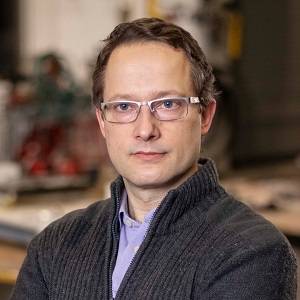
The researchers’ work for CAL FIRE will address the critical problem of ongoing wildfire threats in California, where blazes have burned millions of acres, destroyed thousands of homes, and left more than 100 people dead in recent years. In 2021, more than 8,000 fires burned more than 2.5 million acres across the state.
“The fire protection engineering community has developed tools to design structures to resist fire, but disastrous wildfires in California and elsewhere have demonstrated that communities remain vulnerable to destruction,” said Simeoni, a professor in the WPI Department of Fire Protection Engineering.
Simeoni will be principal investigator (PI) of the project and will collaborate with co-PI Urban, who is an assistant professor in WPI’s Department of Fire Protection Engineering. They will simulate fires under controlled conditions in laboratory experiments with vegetation found in California during dry summer conditions and then use data from the experiments to develop computational models that predict how fire spreads among separate and specific fuel sources.
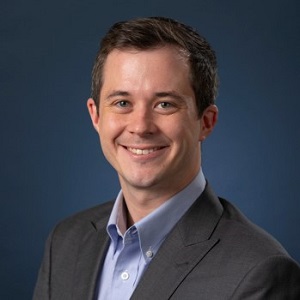
“New tools are needed to determine necessary defensible space around homes and fire breaks so that engineers can develop strategies to reduce exposure of communities and structures to wildfires,” said Urban.
Simeoni is a former firefighter who has studied how wind impacts wildfires and how burn patterns across landscapes can point to the origin of wildfires. He was recently awarded $399,999 by the National Institute of Standards and Technology to develop technology to simulate wildfires near communities, reconstruct how wildfires burn, and determine hazards to communities by wildfires.
Urban focuses his research on how flying showers of burning embers and intermittent winds impact the spread of wildfires. The National Science Foundation has awarded him $200,000 to determine how wind gusts impact the spread of wildfires and $399,095 for experiments aboard the International Space Station to understand the impact of dynamic fire processes on wildfire spread.
“Fire has been and will always be a factor in how we live,” Simeoni said. “It is critical for researchers to think about what we can do to prepare for the next fire season and what can we do over the next five or 10 years to ensure that we are developing a way to coexist with fire.”
“Development of Engineering Tools for Exposure Analysis at the WUI” is part of California Climate Investments, a statewide program that puts billions of cap-and-trade dollars to work reducing greenhouse gas emissions, strengthening the economy, and improving public health and the environment—particularly in disadvantaged communities. The cap-and-trade program also creates a financial incentive for industries to invest in clean technologies and develop innovative ways to reduce pollution. California Climate Investments projects include affordable housing, renewable energy, public transportation, zero-emission vehicles, environmental restoration, more sustainable agriculture, recycling, and much more. At least 35 percent of these investments are located within and benefiting residents of disadvantaged communities, low-income communities, and low-income households across California. For more information, visit the California Climate Investments website at https://www.caclimateinvestments.ca.gov.
